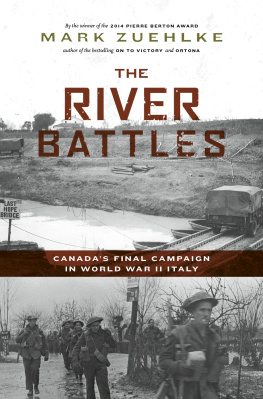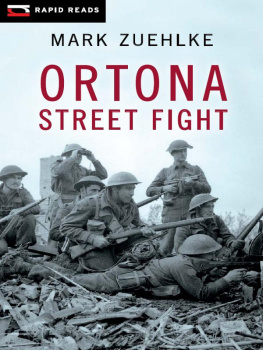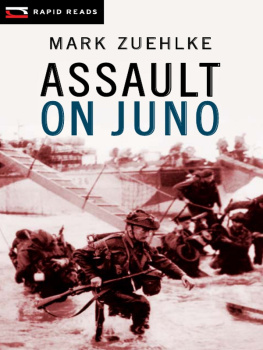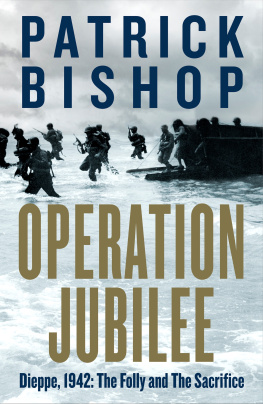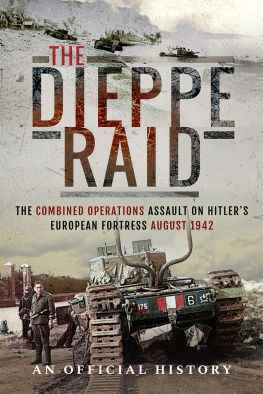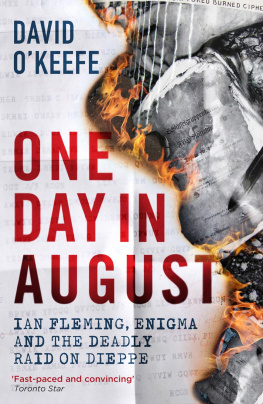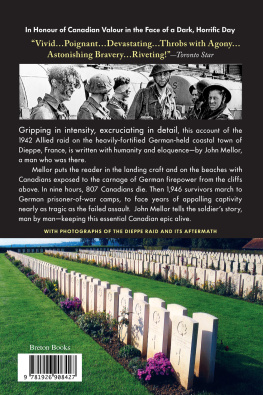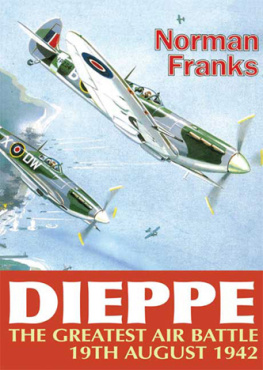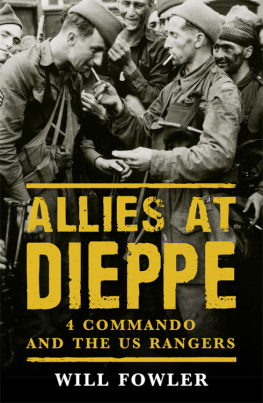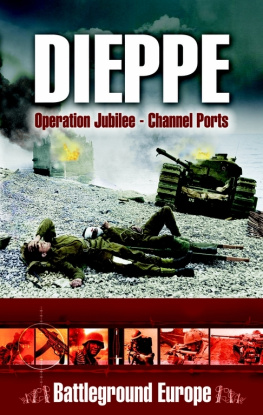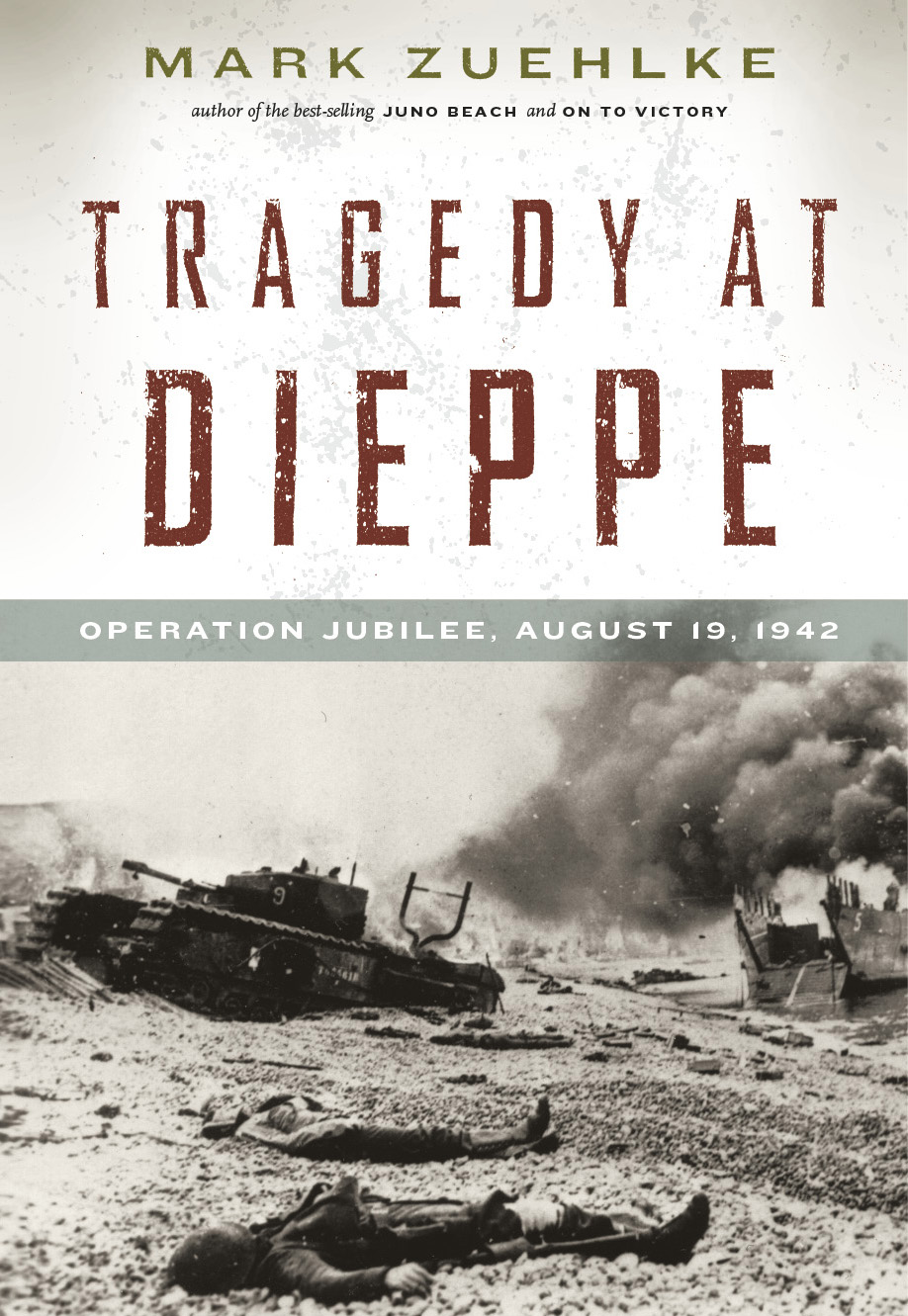
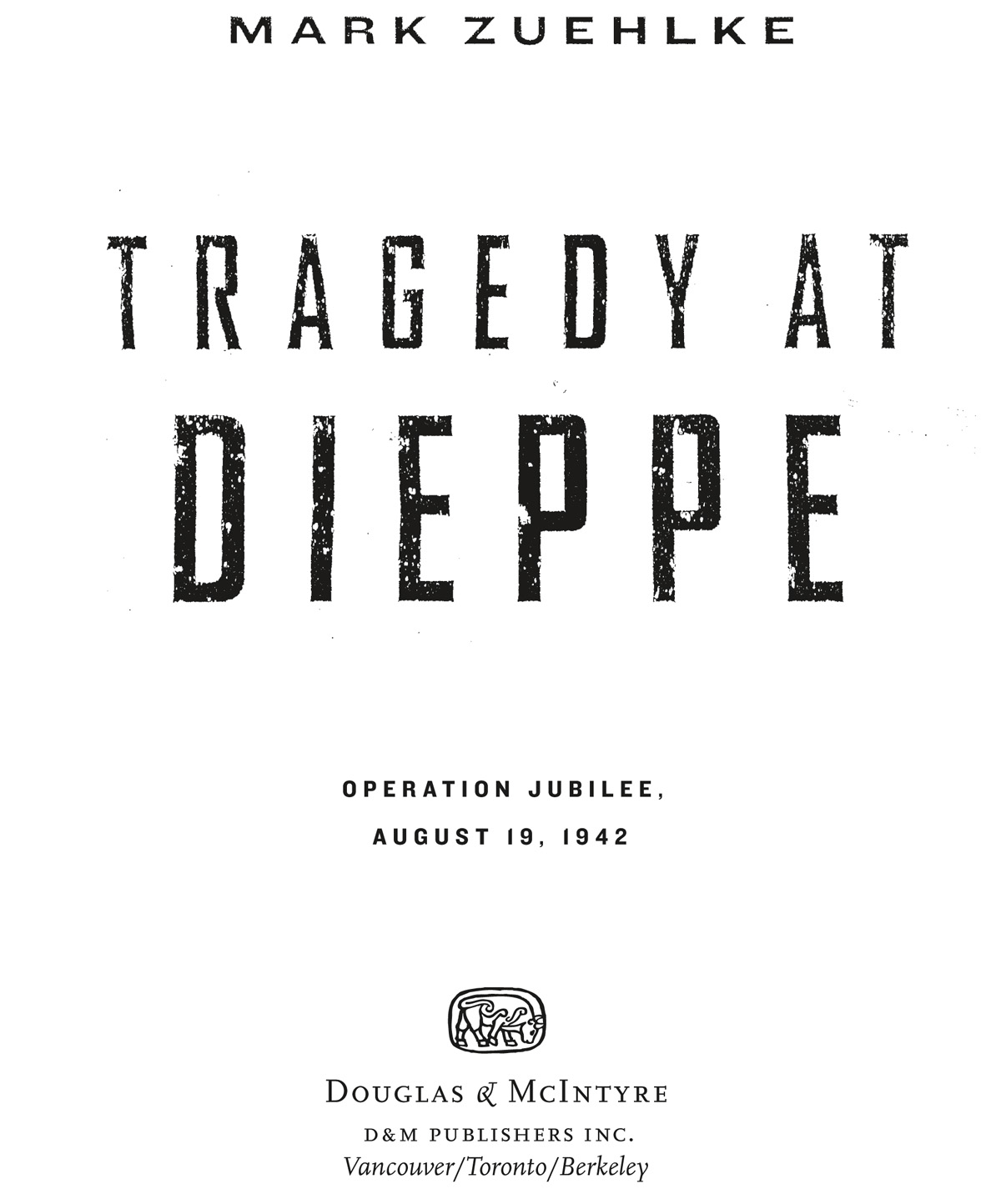
The Canadian Battle Series*
Breakout from Juno: First Canadian Army and the Normandy Campaign, July 4August 21, 1944
On to Victory: The Canadian Liberation of the Netherlands, March 23May 5, 1945
Operation Husky: The Canadian Invasion of Sicily, July 10August 7, 1943
Terrible Victory: First Canadian Army and the Scheldt Estuary Campaign, September 13November 6, 1944
Holding Juno: Canadas Heroic Defence of the D-Day Beaches, June 712, 1944
Juno Beach: Canadas D-Day Victory: June 6, 1944
The Gothic Line: Canadas Month of Hell in World War II Italy
The Liri Valley: Canadas World War II Breakthrough to Rome
Ortona: Canadas Epic World War II Battle
Other Military History Books by Mark Zuehlke
The Canadian Military Atlas: Four Centuries of Conflict from New France to Kosovo (with C. Stuart Daniel)*
Brave Battalion: The Remarkable Saga of the 16th Battalion (Canadian Scottish) in the First World War
The Gallant Cause: Canadians in the Spanish Civil War, 19361939
For Honours Sake: The War of 1812 and the Brokering of an Uneasy Peace
Ortona Street Fight
Assault on Juno
*Available from D&M Publishers Inc.
We were ready for Dieppe. We were well trained for Dieppe. Why shouldnt we have Dieppe? Why give it to someone else? I think whoever got it for the Canadians did absolutely right. Our attitude was, Give us this show. Make it ours. Make it all Canadians. We want it.
Major Norman Ross, Queens Own Cameron Highlanders of Canada
The Canadians are 1st Class chaps; if anyone can pull it off, they will.
Lieutenant General Bernard Law Montgomery, July 1, 1942
It is incomprehensible that it should be believed that a single Canadian Division should be able to overrun a German Infantry Regiment [equivalent to a Canadian Brigade] reinforced with artillery.
German 302nd Infantry Division after-action report on the Dieppe raid
I am afraid that this operation will go down as one of the great failures of history.
Brigadier Church Mann to Brigadier Lucien Truscott aboard HMS Fernie
Contents
Acknowledgements
The foundation upon which each Canadian Battle Series book stands is extensive research. Along the way, many people pitch in to assist in this always enormous undertaking. Bruce Dodds, whose father was a 2nd Field Company, RCE, sapper at Dieppe, contributed a copy of Mountbattens 1973 speech to Canadian veterans. During a whirlwind digital photography session at Library and Archives Canada (LAC) in Ottawa, Alan Boyce weighed in with his camera. The thousands of images collected that day would have been far fewer without his volunteering to help. Alan also saved the day later, when I realized the John Hughes-Hallett fonds file had slipped through the net, by going in and shooting hundreds more pages of documents. Johan van Doorn, my colleague in the Netherlands, remains a keystone in the research gathering. His skill at transforming the hundreds of files at various archives that are needed for each book into functional Excel spreadsheets is indispensable. He also, as always, brought his encyclopedic knowledge of World War II into play during readings of the manuscript and is a valued friend. From Newark, New Jersey, David Lippman provided material that fleshed out the American side of the story.
Again I am grateful to the staff at the various archives I consulted, who were always courteous and of great assistance. In the United Kingdom, the staff at Kew were amazing at providing files, sometimes within mere minutes of my filing a request. This was especially valuable, as my time there was shorter than I would have liked. In Ottawa, LAC staff were equally helpful and always sympathetic to an out-of-towner working on a tight budget and within a limited time frame. Steve Harris at the Directorate of Heritage and History, Department of National Defence, spent precious time discussing with me his perceptions of why things went right or mostly wrong during the Dieppe raid based on his having led many military tours of the beaches. The pages at DHH were also unfailingly diligent in retrieving files quickly and efficiently. At the Canadian War Museum, archivist Carol Reid trolled the interview collection to find everyone who had been involved in Dieppe. University of Victoria Special Collections staff were equally helpful in providing digital copies of interviews, recordings, and transcripts contained in the Reginald Roy Oral History Collection.
Scott McIntyre at D&M Publishers remains an unflagging supporter of the Canadian Battle Series and of Canadian military history in general. His commitment to ensuring that the entire series remains in print is laudable. Kathy Vanderlinden worked her usual magic in the tough substantive editor role. C. Stuart Daniel and I spent hours on the phone discussing how to create the so necessary maps, and I am as always grateful for his mapmaking skill and knowledge. Agent Carolyn Swayze not only keeps my writing career on track by handling the main financial and business details but also provides a sympathetic ear and oft wise counsel.
When my partner, Frances Backhouse, and I visited Dieppe, we were impressed by the small museum Mmorial du 19 Aot 1942, housed in the former cinema that Royal Hamilton Light Infantry troops managed to occupy briefly during an incursion into the town. The staff there were extremely helpful in ensuring that we got everything possible out of our visit.
Finally, a huge thanks to Frances for her unhesitating support during the long and arduous writing of this book. She also shared the often sobering and sad moments of visiting the Dieppe beaches and overall battleground. But battleground touring is also a great pleasure for both of us. The Dieppe countryside can be lovely in good weather, and visiting the raid sites is a fascinating and richly rewarding educational experience. I recommend it highly.
Preface
No single canadian military action remains as well analyzed or as controversial as the August 19, 1942, assault on Dieppe. Operation Jubilee was indisputably a disaster. In a nine-hour battle, 807 Canadian troops were killed and 1,946 taken prisonermore than during the eleven months from June 6, 1944, to the end of the war in May 1945. At least 568 of these prisoners were wounded. Seventy-two subsequently died in captivity, most from battle wounds. Of 586 wounded who returned to England, 28 subsequently died. Out of 4,963 Canadian soldiers involved, 3,367 became casualties. That is just shy of 68 per cent of the entire Canadian force. The majority who survived unscathed never got ashore.
British Army losses amounted to 18 officers and 157 other ranks, with 2 of these officers and 12 other ranks dying. Eleven officers and 117 other ranks were reported missing or captured. Fifty U.S. Rangers participating in the raid suffered 22 per cent losses3 killed, 3 taken prisoner, and 5 wounded. As most of the Americans never made it ashore, the loss percentage among those that did was 73 per cent. Naval losses were also heavy, with 550 men killed or wounded75 either killed or succumbing to wounds, 269 listed as either missing or captured. The Royal Air Force, fighting the single largest daytime air battle of the war, suffered its heaviest losses. A total of 106 aircraft were lost, 98 being fighters or reconnaissance aircraft. Sixty-seven airmen were listed killed or presumed dead. Among these were 10 Royal Canadian Air Force pilots.


